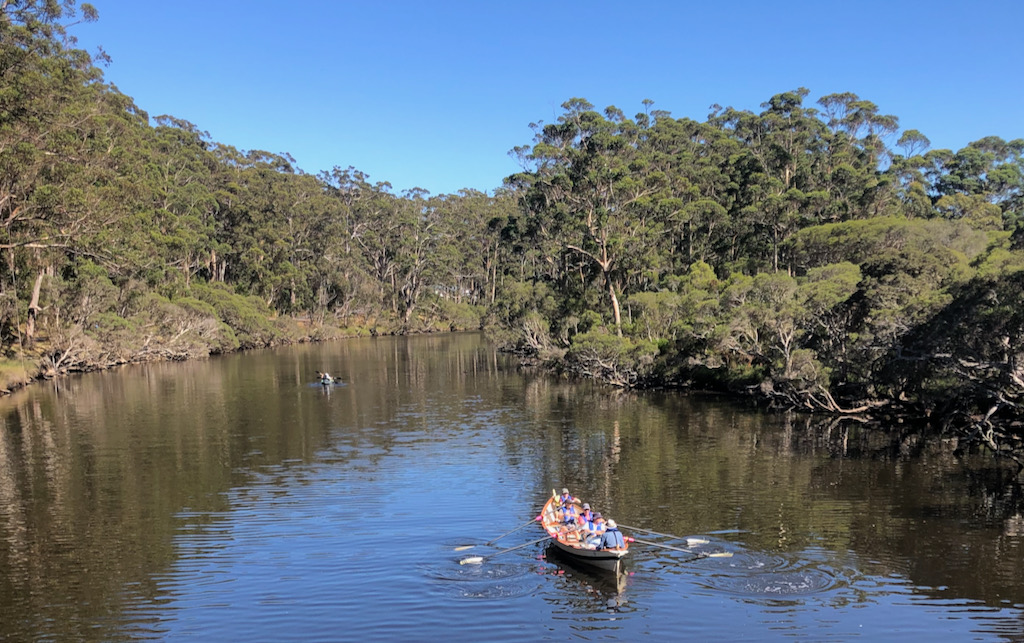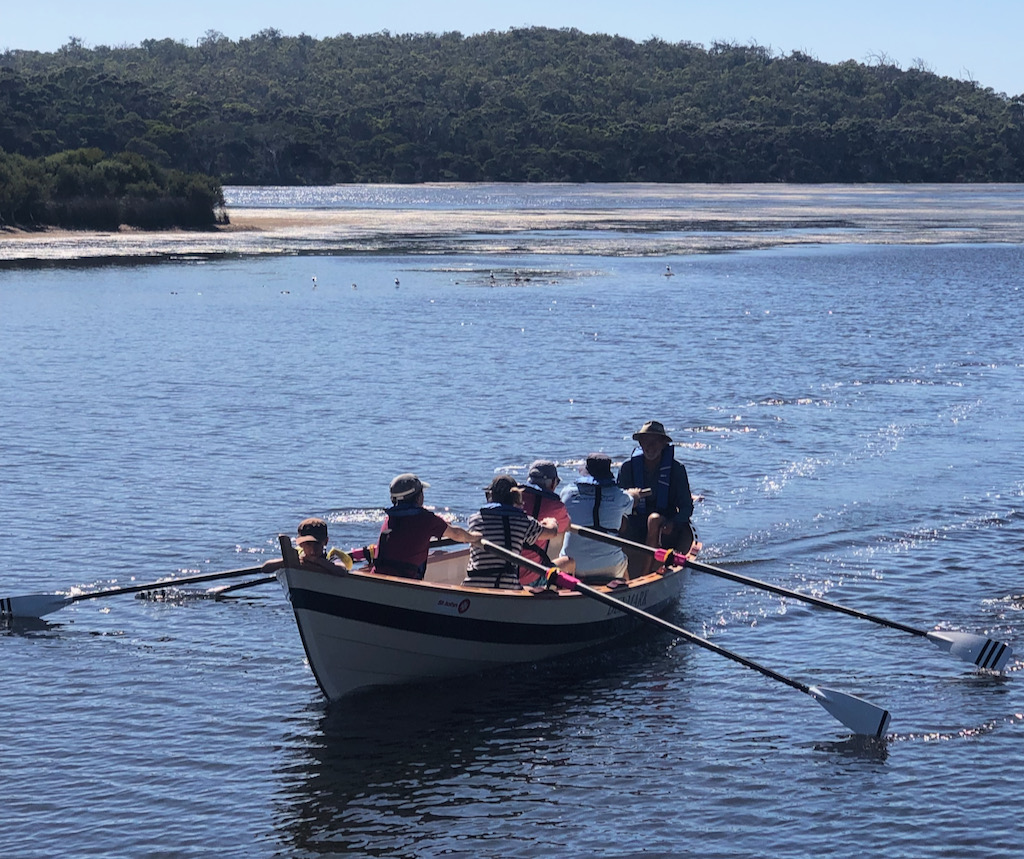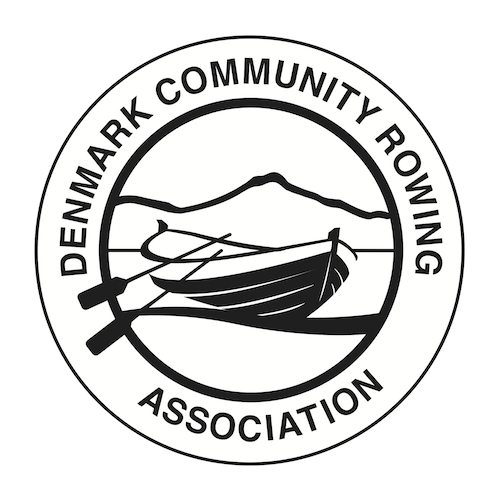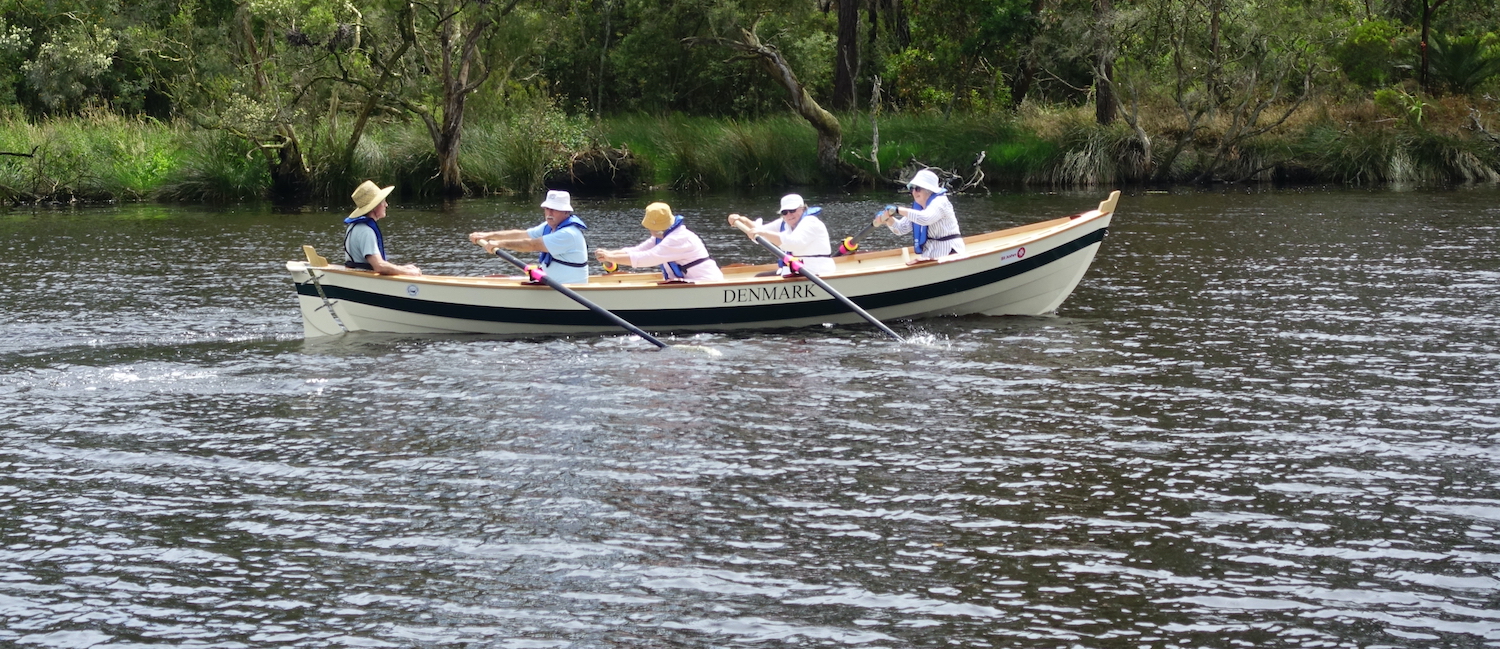
Rowing Sessions
View rowing sessions and make a booking (password required)
Regular rowing sessions have been established on Wednesdays and Sundays. The one hour sessions start at 7.30am on those days and depending on the uptake established on our Google Docs spreadsheet, one, two or three sessions may go out. On Tuesdays in the summer months we have added an early 7am and long row session. We keep an eye on the weather and if there is a spectacular day coming a row on another inlet or river may be organised. Please contact denmarkrowers@iinet.net.au if you are interested in joining a session.
Rowing Guides and Procedures
Access and Check
Access to the skiffs at the Denmark Riverside Club is via a combination lock box containing the key to the roller door on the shed. The cox for your boat will be in charge of opening up and locking up afterwards. The first skiff is on the launching trolley and is checked to see that the bungs are in and that all the rowlocks are in place and working properly. The oars and all equipment including PFDs should be in the boat. Everyone is required to wear a PFD. The cox should make sure everyone is wearing their PFD and that they are aware of the operating procedure. Care should be taken to tuck the inflation toggle away so that it doesn’t get accidentally pulled when rowing. Mobile phones and car keys should be collected into the dry bag attached to the gunwale for safe keeping.
Launching
The roller door is to be left shut while rowing. The boat is rolled down to the river checking for traffic on Morgan Road and launched gently with someone holding the bow rope. The launching trolley is left out of the way beside the ramp in case others want to use the ramp.
The skiff is brought parallel to the beach in just deep enough water for it to continue to float as rowers get in. The cox instructs when each rower should take their seat and is usually the last to get in so that he/she can check that the oars have been set in their rowlocks correctly. Once everyone is ready the cox gives instructions to manoeuvre the skiff away from the bank and and rowing can commence.
Coxing Commands
It helps if coxes are consistent with their terminology. The following are what we use, but other clubs may differ slightly so if there are any guest rowers it may be best to clarify. The commands should be in time with the rhythm at the catch/finish of the stroke, and loud and clear. The rowers seat positions are numbered from the bow who is 1, 2, 3 and stroke 4. Each oar has a number of stripes on its blade that corresponds to their position in the skiff. Rowers should adjust their footrests so that their knees are slightly bent when they are seated. Once adjustments are completed the cox will ask if you are ready to row and each rower “numbers off” by calling out their seat position from one to four.
* Come forward to row – to get the rowers ready for rowing by pushing arms out at full stretch, blades above the water
* Row– start to row, blades drop in, legs, torso and then arms generate the power in the stroke, first 3 short half strokes
* Easy Oars – stop rowing, blades above the water
* Hold water – rowers put the blades in the water to brake the boat
* Ship Oars – pull the oars in until the sleeve/collar is sitting on the opposite gunwale to its rowlock
* Bow turn/row– starboard side (2 and 4) keeps rowing, bow side stops, number 3 blade in and holds water, 1 out
* Stroke turn/row– port side (1 and 3) keeps rowing, stroke side stops, number 4 holds water, 2 out
* Together – both sides join in following a turn
* Stop – emergency stop. All oars in the water and hold them tight
* Come back to row– followed by row – row backwards
* Touch her up (stroke/bow side) – One side takes small strokes to straighten eg race start
* Paddle hard/light – amount of effort in the stroke, not the rating
* Easy on Stroke/bow – both sides row, but one side eases off
Returning to the beach
The cox will call “easy oar” 5-6 boat lengths before beaching the boat at the sand ramp at an angle of about 30 degrees to the bank. At least two oars should remain in place to be used to decrease speed or to add the final momentum to reach the beach as gently as possible. The bow oars-person hops out to steady the skiff at stop it from grounding too heavily. The cox will then get the rowers to unfasten their oars and stand them upright in the boat before laying them down in an orderly fashion on the river side of the skiff seats. Rowers then close the rowlock gates to prevent damage in transit. The cox then removes the rudder and places it in the skiff and overseas an orderly exit from the skiff taking care that the less mobile have plenty of help.
Packing Up
The skiff is pulled onto the launching trolley taking care that the keel remains on its rollers all the way (It is at this point that it is most susceptible to damage). Secure the skiff to the trolley at the bow before pulling it up the slope to the club. Remove the rudder and open the bungs. All crew to help pull the skiff up the slope checking for traffic on Morgan Street as you cut across it.
Using wheel chocks to set the boat up on the slope outside the shed and use the hose to wash the inside with the bungs out and draining. Wash the outside and sponge to remove river scum. Shammy varnish work and topsides.
Rotate the boat and back it into the shed so that it just touches the back wall. Make sure there are 5 PFDs hanging on the bow. Replace the bungs. Shut the roller door and lock it putting the key back into the lock box.
Please thank the cox / coxes for making it possible for you to have had the pleasure of rowing and exercising while they sat in the back of the boat. We expect everyone to be able to share the role of coxing once you have been out in the skiff a few times.


